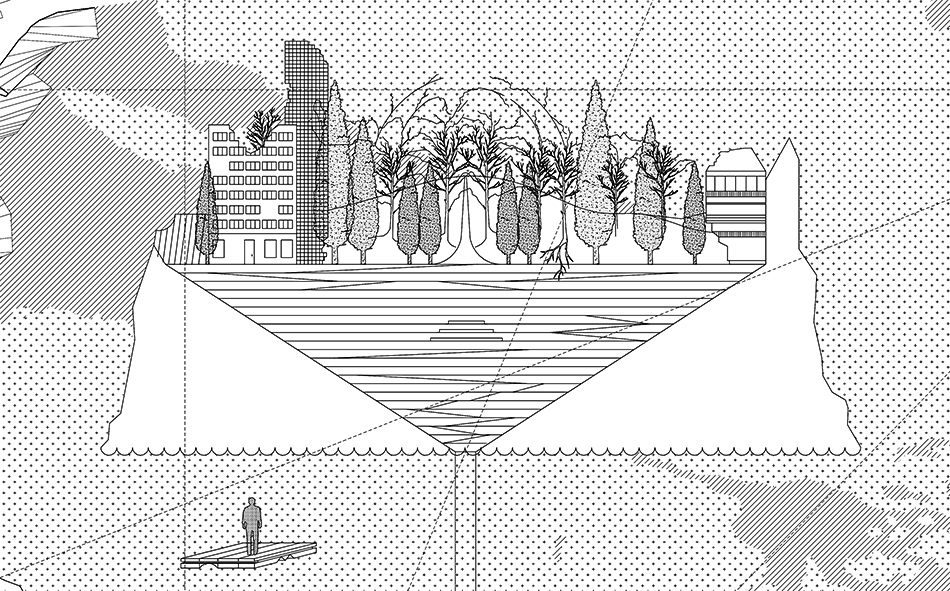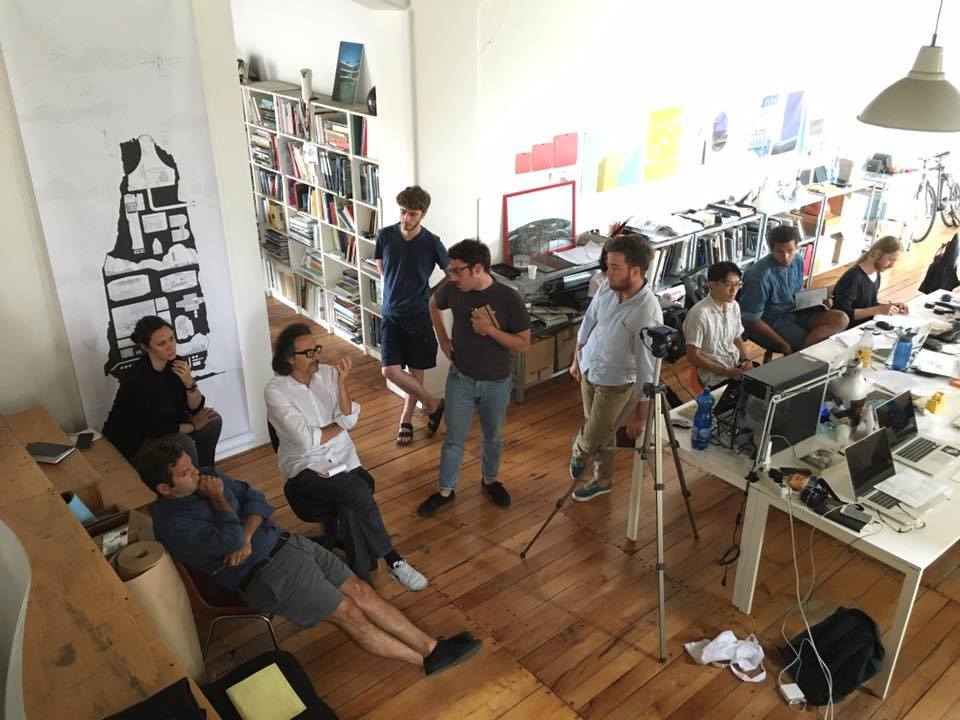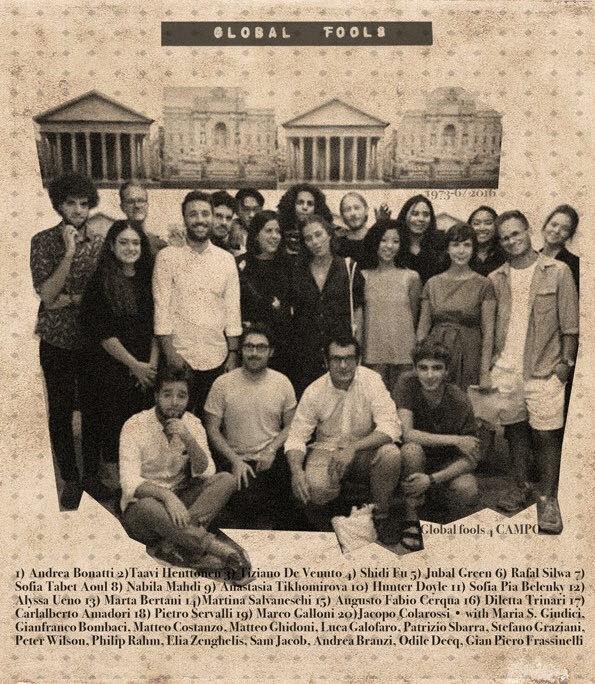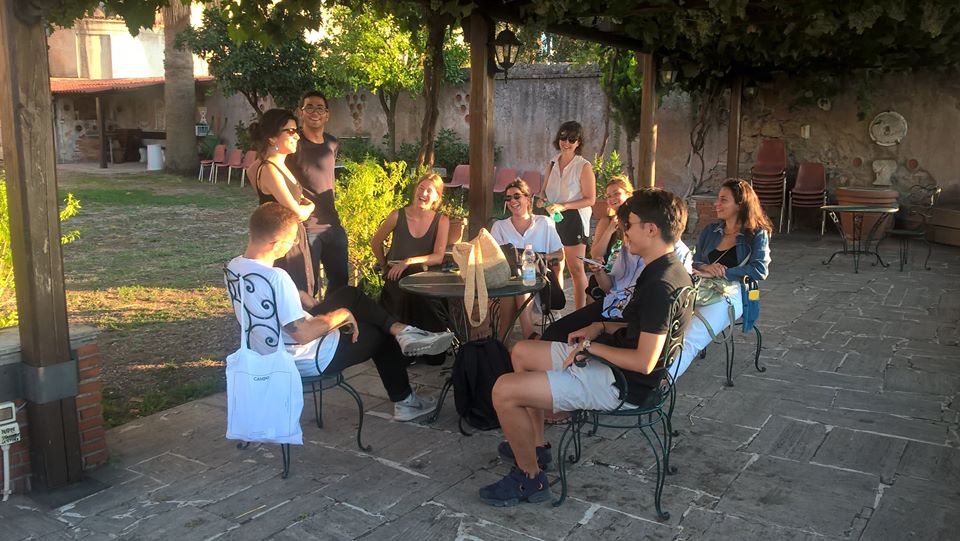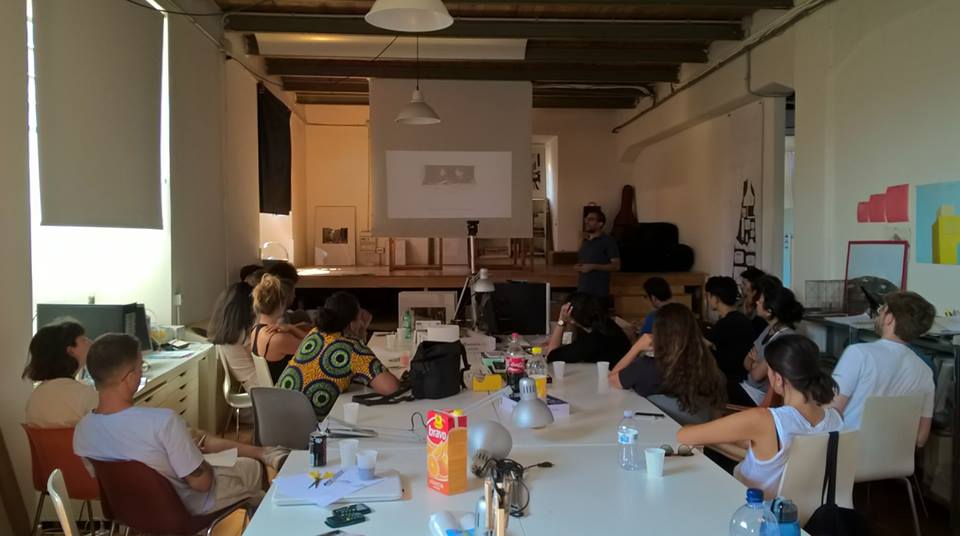NOTHING LEFT TO DESIGN
CAMPO and Black Square Workshop in Rome, September 1-8, 2016 / www.campo.space
In 1973, Ettore Sottsass published on Casabella magazine a text and a series of drawings entitled The Planet as a Festival. The text described the possibility of a land where all humans are free from work and social conditioning and where there is no architecture left to design. All that is left to architects in this condition is to imagine an architecture designed by “others”.
After 43 years, Black Square and CAMPO invited a group of contemporary architects to define their own Planet as a Festival. Andrea Branzi, Odile Decq, Gian Piero Frassinelli, Matteo Ghidoni, Sam Jacob, Philippe Rahm, Peter Wilson, and Elia Zenghelis contributed to the project by writing a description of a space intended to host ceremonies – a space capable to decipher dreams and desires that still are present in our contemporary condition.
More than verifying the extraordinary possibilities offered by technological evolution, Sottsass was interested in criticizing an era obsessed by future. He imagined a world where cities disappear swallowed by the jungle and “production problems no longer exist. A few movements alone are sufficient, and the machines make everything by themselves in eternally repeating cycles”.
The Planet as a Festival is not a utopian project but rather the construction of a condition in which architecture can work as a device for new rituals, thus emancipating itself from the need to respond to a functional program. Architecture is then free to give space to the most profound instincts that animate collective life. It is precisely when ‘nothing is left to design’ that the mandate of architecture can be reinvented. In this scenario, no social models are left to propose, and the rhetoric of infinite growth and development that animated the modern era comes to an end. Sottsass addressed this condition imagining architectures made by others, capable to represent dormant desires, which are in need of a form: a monolithic dispenser for incense, drugs, and laughing gas set in a campground, rafts for listening to chamber music on a river, and a stadium in which people gather to watch the stars. The projects were illustrated in collaboration with Tiger Tateishi and were intended as an offspring of the “moral of the man worker-producer”. Ultimately, Sottsass aimed to demonstrate how “men can live for the sake of living and can work to come to know, by means of their bodies, their psyche and their sex, that they are living.”
The scripts offered by our 8 architect contributors have become the basis for a set of narrative drawings developed during a workshop at CAMPO within which architecture students tried to give form – as Sottsass would say – to spaces designed by others. For a week, we gathered in Rome, working on these translations from text to image, and exploring and documenting those places where sacred and profane rituals and ceremonies are celebrated in Rome today, from the football stadium to the Mouth of Truth, from St. Peter to the Trevi Fountain.
Texts, drawings, and results of the fieldwork will be featured in a publication to be presented at CAMPO in September 2017.
Workshop curators: Gianfranco Bombaci, Maria S. Giudici / Workhsop assistant: Patrizio Sbarra
Participants: Alyssa Ueno, Anastasia Tikhomirova, Andrea Bonatti, Augusto Fabio Cerqua, Carlalberto Amadori, Diletta Trinari, Hunter Doyle, Jacopo Colarossi, Jubal Green, Marco Galloni, Marta Bertani, Martina Salvaneschi, Nabila Mahdi, Pietro Servalli, Rafal Sliwa, Sofia Pia Belenki, Sofia Tabet Aoul, Shidi Fu, Taavi Henttonen, Tiziano De Venuto
With the collaboration of Matteo Costanzo, Luca Galofaro and Davide Sacconi. Special contribution and lecture by Stefano Graziani assisted by Jacopo Valentini.

